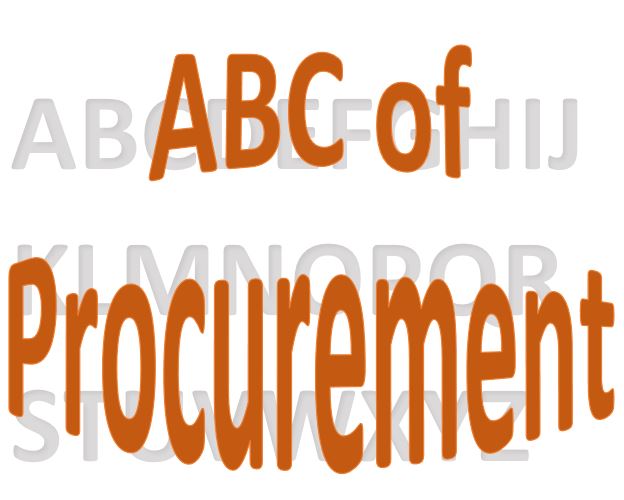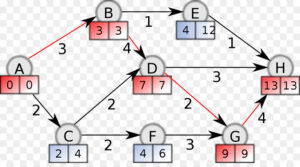IT procurement usually gives me headaches. So many terms that one needs to understand, usually very few or a single supplier. And even in relatively large companies, it is not such a big spend to hire a specialist. Hence, we are often in a position to blindly follow the recommendation of the IT team. And they do not care about the due diligence or savings. Just to get what they want as fast as possible.
IT categories
Let us start from the basics, as always. What are IT sub-categories? In no particular order, here they are:
- Hardware. This is the physical equipment. So, all the computers, projectors, printers, and other stuff you see around the office.
- Network are the cables, switches, and routers spreading all over buildings. As we mostly do not see all those equipment, we think this is simple and easy. Ask your IT to evaluate the possibility of moving the server to another room. You’ll be amazed how many kilometers of cables alone will be required.
- Servers are the big computers where we keep our main database and the ERP software if it’s an on-premise version. While most will say that servers will soon disappear, as everything is moving to the cloud, it is not so simple. Some companies have so sensitive data that they do not even connect the server to the internet. Some have legacy software that is very expensive and difficult to rework for moving to the cloud. And some places have still unreliable internet and do not want to have downtime due to this.
- Software is all the programs installed on the computers. It includes the Operating system, usually Office, and all other programs you have and use. For some users and industries, we have to procure specialized software. Here the price goes into the range of tens of thousands of USD. So don’t consider software as a minor category.
- Internet and everything around it. From internet connection fees, over cloud storage space fees, website registration, and creation. And now with the Metaverse coming, it will become even more complex. For example, setting up your company shop online.
- Database Management covers all services needed to keep your main company data safe and accessible. There are several ways to back up the data and assure everything is fine if something goes wrong with your main database. Also, here we have services related to synchronization if you have multiple servers across the world or the database is used by multiple systems and needs to be converted or adjusted in any way.
- Security is a big thing in IT. Those are firewalls, anti-virus, and all other systems that protect your network from intruders and hijacking. Damage related to cybercrime is estimated at 6 trillion USD for 2021. And your Company does not want to have data leak or loss. Or to pay ransom to some hacker who managed to hijack your server.
- Communication is not really IT, but more often than not gets added. Here we have landlines and mobile phones, as well IP phones and walkie-talkies.
- IT Support covers help for our employees in all matters IT. Setting up a printer and connecting to the projector. Installation of software, or help when the computer freezes. Sometimes it is outsourced, especially if the team is spread and the support is mainly through the internet or phone.
Companies merge or separate those sub-categories depending on the requirements, and you will find all kinds of combinations.
RFQ points for IT purchases
Now to the RFQ. While we can just copy/paste all the requirements received from IT, there are points they may miss. And asking a good question at this stage can save money and time.
Those are the RFQs I or some of my colleagues have dealt with in the past when it comes to IT. Your case may be completely the opposite. So, consider this only as a guide, a list of points that may be applicable.
Web page design
Design is a very subjective matter. And hence conveying the right message to the vendor is a challenge we have to tackle upfront. You can pick a similar website and ask for a quote based on that. But, you have to quantify certain aspects. For example, Brand color-coding, if eCommerce then payment gateway integrations, cart look-and-feel, etc.
It would be easier to pick a site similar and then draft the expectations accordingly. Also, there should be room for improvement as part of the same Contract. Design often needs multiple iterations of changes. Hence ask how many primary options and variations are covered under the Contract.
Do not miss to clearly define the expected results in a measurable way. For example, Google results on the first page for so and so keyword. Or xx number of visits to the site from Google.
Custom made software
As its name says, it is custom-made. Hence, it is not easy to give any kind of process or a road map. I have for you a couple of points that usually come up:
- First of all, do a total cost of ownership (TCO) over 5 years which is generally a life of technology or hardware
- Secondly, make sure you have the escrow clause to get the source code if required. And know your options and interdependency between your various integrated systems.
- Discuss the specific causes or conditions we need to keep in mind for software contracts to avoid hidden costs?
- Your IT should as well provide a strategy for phasing out old portals.
- Assure there are specific conditions related to security as we hear about rising cyber threats
- And what about scaling or upgrading conditions as things are changing rapidly?
- A common challenge is annual price escalation on renewals. Consider moving to cloud and subscription models.
Service Level Agreements (SLAs)
SLAs are agreements between two (or more) parties – the customer and the service provider(s). They are formal statements of performance requirements, specifying the nature and level of service to be provided by the service supplier.
In IT they are very important, as IT projects sometimes take a long time and it becomes very difficult to measure progress if everything is not aligned at the start.
At the minimum, there should be:
- A document that details how KPIs will be monitored
- Actions and consequences of scores achieved
- This detail may be embedded in the specification or the main body of the contract, or it may be set out in a separate service level agreement (SLA)
- The SLA becomes legally enforceable if it is referred to in a contract
Contents of SLAs:
- What services are included
- Standards or levels of service expected from the provider
- The allocation of responsibility for activities, risks, and costs
- How services and service levels will be monitored and reviewed, what measures of evaluation will be used, and how problems (if any) will be addressed
- How complaints and disputes will be managed
- When and how the agreement will be reviewed and revised
Supplier-defined SLAs should be avoided whenever possible.
Agile IT procurement
Agile is a progressive way of implementing solutions. It focuses on value creation from the shortest possible cycle rather than lengthy implementation waiting times. So, a milestone for example would be:
Month 1 – a working prototype of the solution
Month 2 – an upgraded working version of the Solution so on and so forth.
The idea is to get the value / see the benefit and then refine it from there. In this model, everything is flexible. We may change our end goal completely after a couple of iterations. Therefore, if you want to go with Agile development, make sure you have this flexibility integrated into your contract.
As you can see, IT procurement has its own challenges and specific requirements. Just be open to discussion with the team, and it should be fine. After a couple of contracts, you will become a specialist.



